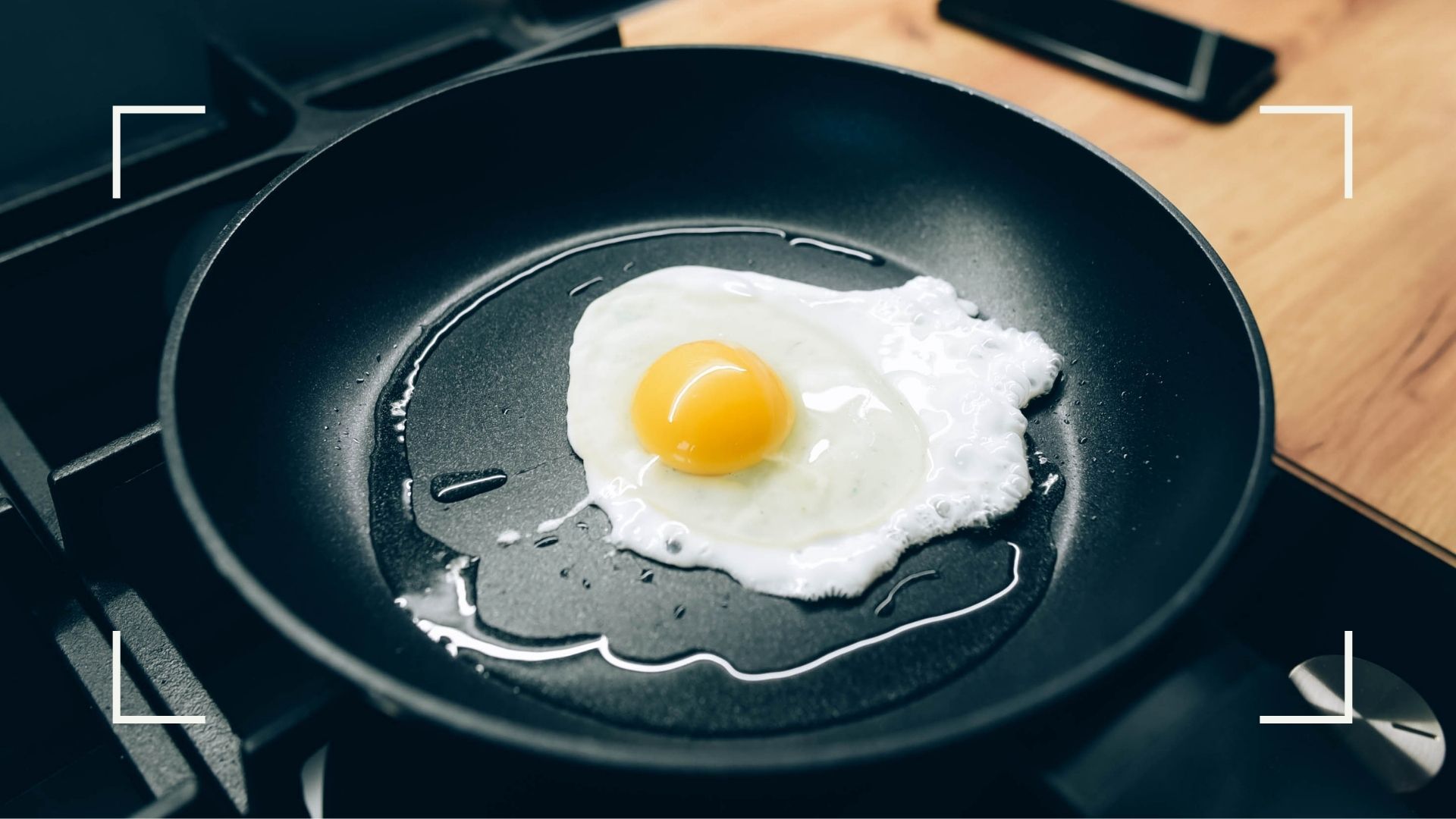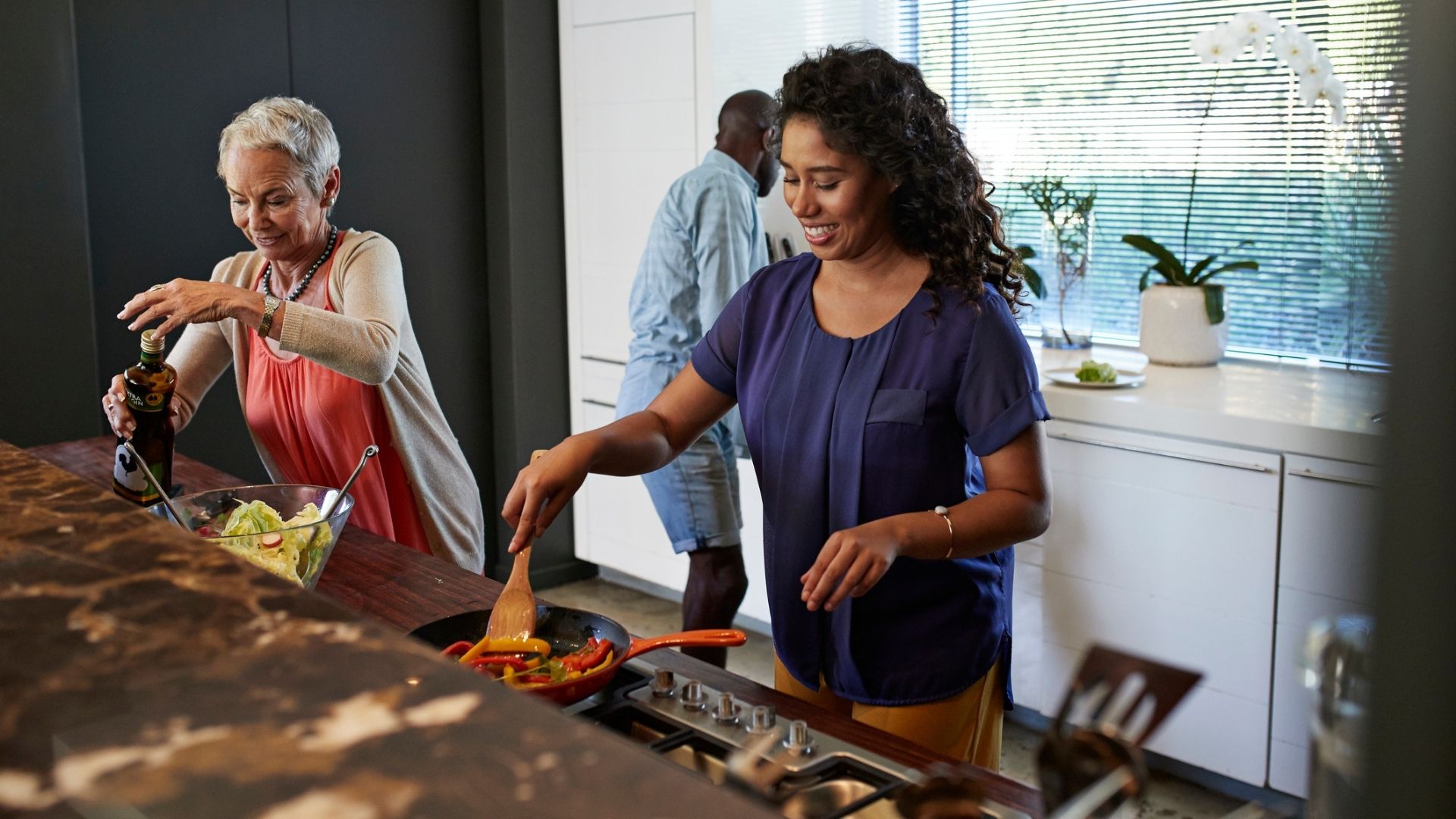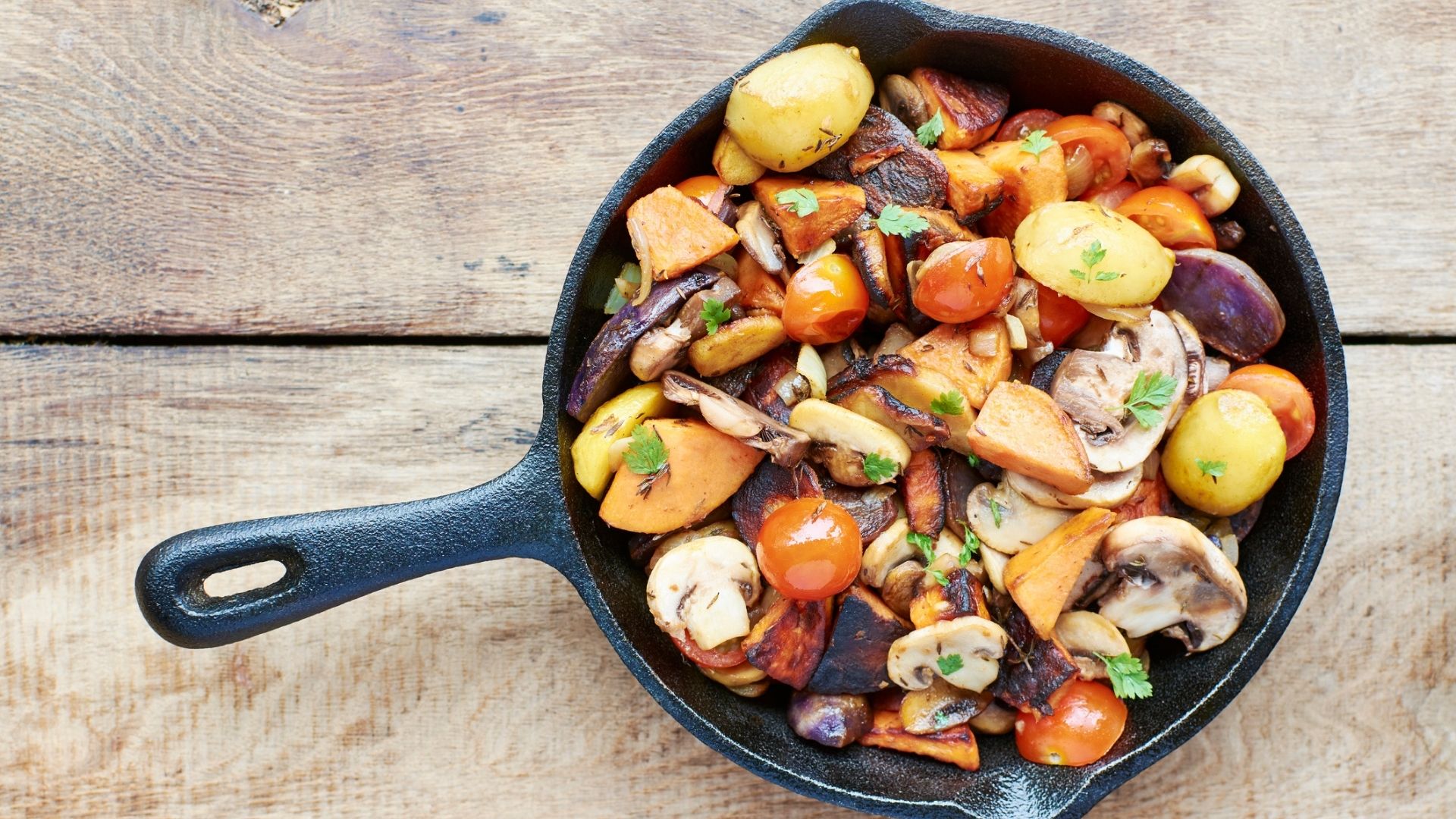Are non-stick pans safe? We investigate the much-debated cookware item
If you're wondering whether non-stick pans are safe to use at home, here's what you need to know


Are non-stick pans safe? Ever since they appeared on supermarket shelves in the 1950s, health experts have been discussing the pros and cons of this now-everyday piece of cookware.
The crux of the issue is that these pans require a polytetrafluoroethylene (PTFE) coating—like the one trademarked as Teflon—to ensure that food doesn't stick to the bottom of the pan while cooking. Up until 2013, this coating contained perfluorooctanoic acid (PFOA) as an adhesive and some studies claim a link between the material to several chronic health conditions, including cancer.
However, the issue isn’t all that it’s quite cracked up to be. Whether you’re looking to buy one of the best non-stick pans and want to know how to clean them, or you’re wondering whether to get rid of your old cookware, this is what a plastics expert wants you to know.
Are non-stick pans safe?
Yes, it’s safe to use non-stick pans. Teflon removed the chemical entirely from their pans in 2013 after the compound was banned by the Stockholm Convention, meaning that any made after this date won't contain perfluorooctanoic acid (PFOA) at all.
Prior to this, the risk associated with non-stick cookware was not significantly high. Most of the PFOA was burnt off during the manufacturing process anyway and the little that remained, according to a study by the New York State Department of Health, could be released into the air during cooking but was likely not enough to cause any substantial damage.
To experience any symptoms of polymer fume fever, also called "Teflon flu", which tends to include temporary chills, fever, body aches, and headaches, new research from Drexel University College of Medicine suggests a person would need to be continuously exposed to the heated compounds for at least four hours at temperatures of 730°F (390°C), which is significantly more than normal cooking temperature.
There are some instances of this occurring in a domestic setting but they are extreme instances. For example, a case was reported by Ohta General Hospital Foundation in 2015 where a man lay unconscious next to a PTFE-coated pan on heat for 10 hours. He arrived at the hospital with all the symptoms of polymer fume fever—and was also suffering with the early signs of lung damage.
Sign up to our free daily email for the latest royal and entertainment news, interesting opinion, expert advice on styling and beauty trends, and no-nonsense guides to the health and wellness questions you want answered.
What are the risks associated with PFOA?

Naturally with plastics, there is some risk of exposure to chemicals when they are burnt and the fumes released into the air. “The compounds can interfere with how much body fat we have, the hormonal system, the immune system, and the thyroid,” Dr Olwenn Martin, plastics expert and associate professor of Global Challenges at University College London, tells woman&home.
She also says that the compounds have been associated with a lower birth weight and adverse outcomes in studies from the National Institute of Environmental Health Sciences involving pregnant women. “It also has implications for the health of the baby when they’re an adult, such as neurodevelopment issues.”
But Dr Martin stresses, “These are risks. It’s not that if you’re exposed then all of this will definitely happen. It just increases the risks that it might happen.”
Perfluorinated compounds is the name given to the wide group of chemicals which includes PTFE and PFOA, Dr Martin says. “They’re all linked with fluorine, an element that creates very strong bonds with other elements, making it very stable.” This means that cooking your dinner with a non-stick pan is unlikely to lead to much—if any—exposure to the compounds as they’re relatively structurally sound in their chemistry.
Teflon and cancer—what's the link?
Multiple sources, including The American Cancer Society, confirm there is no link between PFOA-free non-stick Teflon cookware and cancer. While PFOA was used in the manufacturing of Teflon prior to 2013, it is not today and all Teflon cookware items are PFOA-free.
It is because of the associated health risks of PFOA that Teflon no longer uses it in their cookware, however. Several studies, including from the University of California and the National Cancer Institute, have confirmed a potential link between PFOA and an increased risk of testicular and kidney cancer—but more research is needed to confirm this.
While a review from the Rollins School of Public Health looked at the potential impact of industrial exposure to PFOA on cancer risk. After looking at independent studies of people who lived or worked around chemical plants that involve PFOA in the US, the review found that high levels of perfluorinated compounds may lead to an increased risk of the same two types of cancer, although they stressed the evidence was limited.
"Teflon is no longer made using PFOAs and the use of PFOAs is already restricted in cookware in the UK," explains Maxine Lenza, health information officer at Cancer Research UK. "Where is some research that suggests PFOAs can cause cancer, this risk is to people exposed to high amounts in certain settings such as factories, and there is no evidence that much lower exposures of chemicals, like using a non-stick frying pan increases cancer risk."
She adds, "When it comes to cancer risk, what you put in your pan is more important. So, make sure you are using your cookware to make healthy balanced meals."
What other materials contain perfluorooctanoic acid (PFOA)?

There are other materials containing this PFOA that are more likely to pose a risk, such as takeaway food packaging and other water or oil-resistant paper products.
“A non-stick pan is not necessarily the root through which we get exposed,” Dr Martin says, confirming the findings of the Zurich-based Institute for Chemical and Bioengineering's study.
Other products that include PFOA are:
- Stain repellents used on carpets and fabric furnishings
- Oil and water repellents
- Waterproof clothing and materials
- Ski wear and equipment
- Fire extinguisher foam
- Metal spray plating
- Dental floss
“I would be most worried about takeaway meals and products like microwave popcorn. Especially if it’s hot food or food that gets re-heated in its original packaging,” Dr Martin says.
And a new study by Arnika and eight other European non-profit organisations confirms that we should also be concerned. Out of 42 samples of disposable food packaging from fast food outlets across several countries, high levels of per- and polyfluoroalkyl substances (PFAS), other members of the dangerous compound group, were found in 32 samples after laboratory testing. In some cases, the research reported, the levels were 60 times higher than what is already in the environment, suggesting that the chemicals had been purposefully added into the packaging.
While they did not contain PFOAs, scientists said that the risks of these specific compounds were yet to be established—and warned the public against accepting disposable wrappings at fast food restaurants.
Is Teflon the same as non-stick?
No, Teflon is the trademarked name for polytetrafluoroethylene (PTFE) while “non-stick” refers to a category of cookware. A regular cast-iron skillet, for example, will be relatively non-stick without this coating when it's seasoned to around 400°F.
There are also other PTFE brands aside from Teflon that produce a similar style of non-stick coating, including HALO, Dura-Slide, and Granite Rock.
PTFE was first discovered by the chemical company Dupont in 1938 before being incorporated into cookware in the 1950s. Being the first ones to market the product, Teflon stamped their trademark on the material in 1941.
Alternatives to non-stick pans
If you’re looking for a non-stick alternative, there are plenty out there including cast iron skillets, stainless non-stick pans and ceramic pans. However, just as with standard non-stick, there are positives and negatives to each.
1. Cast-iron skillet

The best cast-iron skillets can be brilliant alternatives to a traditional non-stick pan, simply because they generate their non-stick surface the more you use it. You should know that:
- Great for pan-frying, searing, baking, braising, and more.
- A cast-iron skillet makes for an option that's friendly on your finances: even the highest quality ones can be incredibly budget-friendly.
- Cast iron skillets can involve a lot of maintenance and can rust if they're not dried properly after use.
- As the name suggests, they're heavy!
2. Ceramic non-stick pans

Ceramic non-stick pans make a great alternative as they're made of metal, but they have a non-stick coating with a ceramic base. Some things to consider...
- While some manufacturers suggest that their pans contain no chemicals, silicone is a popular product in non-stick ceramic coating. This can degrade at a high-heat over time.
- Another claim is that the pans are environmentally friendly. They're only relatively better for the environment than regular non-stick pans as they haven't reached the same levels of mass production.
- They can be easily damaged through scratching and over-heating.
- Searing meat and veg can be difficult due to the lack of friction on the pan's surface.
3. Stainless steel pans

Made from layers of stainless steel and aluminum, stainless steel pans are a popular alternative to non-stick pans.
- The best stainless steel pans have the potential to last for years.
- They don't offer a non-stick surface but can be spritzed with oil to reduce the risk of food sticking.
- You can also 'season' your pan in advance to minimize the need for excess oil.
- Particularly great for gravy, stews, and soups.
Other options to consider include carbon steel pans and enameled cast iron pans. Some of the best induction pans can also be a great choice.
How to minimise your risk of PFOA exposure while cooking
If you've decided to stick with the non-stick, there are a couple of precautions you can take to prevent any PFOA exposure.
- Replace your old non-stick pans—Teflon stopped using PFOA in their non-stick cookware in 2013 but before this, it was part of the manufacturing process. If you have pans older than this, treat yourself to new ones.
- Avoid preheating the pan—While you'd need to heat the pan for hours to release any fumes, heating up an empty pan could damage it over time. To avoid this, make sure you've got food, liquid, or oil in the pan before cooking.
- Don't go over the recommended cooking temperature—Food safety guidance from the US Department of Agriculture suggests that up to 165°F (74°C) is hot enough to ensure that all meats, poultry, vegetables, and dairy products are cooked through. As heat is the catalyst for these compounds releasing into the air, avoid turning up the heat unless you have to.
- Open a window—And turn on the extractor fan. While most of us will do this anyway when cooking to clear unwanted smells from the kitchen, it's a good plan if you're worried about fumes.
- Don't use metal utensils—Scratching away at the pan, whether with a metal fish slice during cooking or wire brush when cleaning can cause the surface of the pan to wear away, revealing chemicals underneath.

Grace Walsh is woman&home's Health Channel Editor, working across the areas of fitness, nutrition, sleep, mental health, relationships, and sex. She is also a qualified fitness instructor. In 2025, she will be taking on her third marathon in Brighton, completing her first ultra marathon, and qualifying as a certified personal trainer and nutrition coach.
A digital journalist with over seven years experience as a writer and editor for UK publications, Grace has covered (almost) everything in the world of health and wellbeing with bylines in Cosmopolitan, Red, The i Paper, GoodtoKnow, and more.